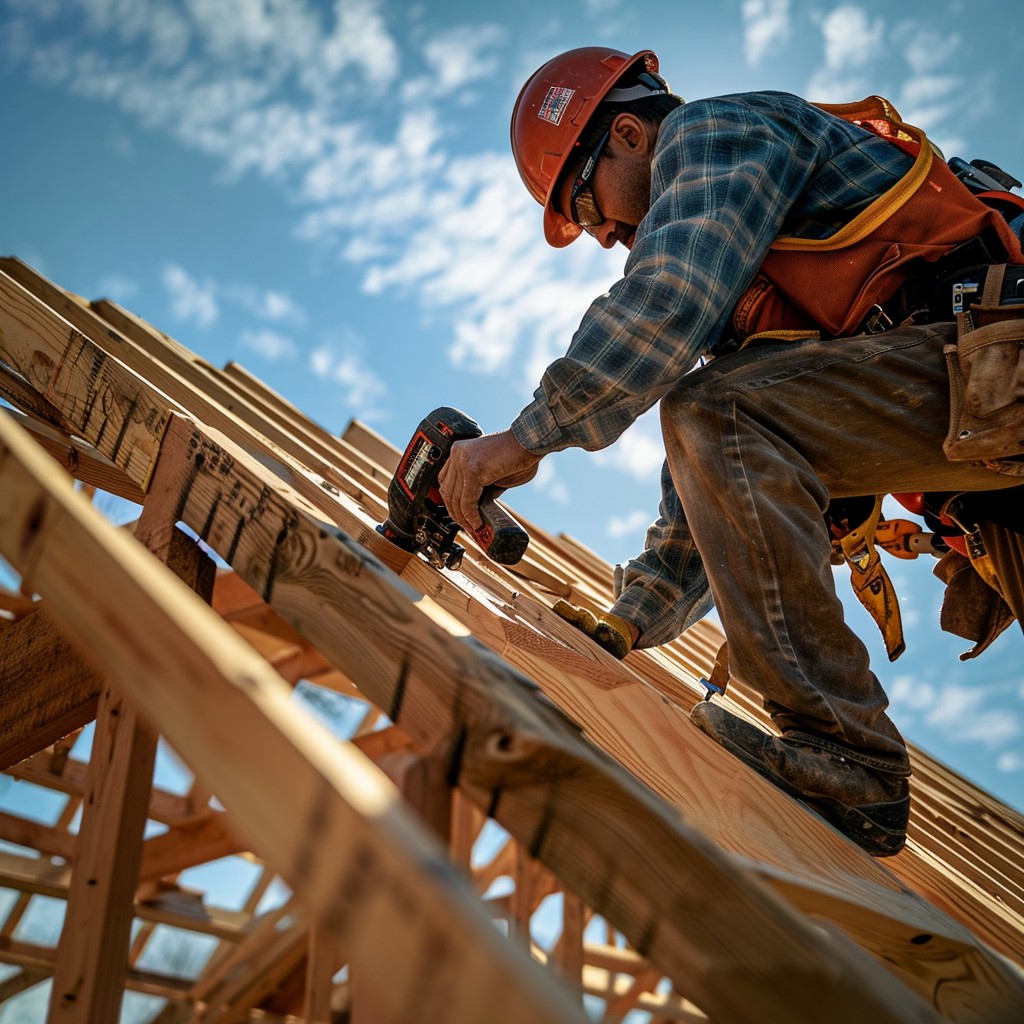Master the art of site carpentry with expert techniques that transform raw timber into architectural masterpieces, setting industry standards for precision and craftsmanship.
Understanding Site Carpentry Fundamentals
Site carpentry stands as a cornerstone of modern construction, representing the critical intersection between architectural vision and practical implementation. Unlike workshop-based joinery, site carpentry involves the precise installation and modification of timber components directly on construction sites. In the UK construction industry, site carpenters play a pivotal role in both residential and commercial projects, with recent statistics showing that skilled site carpenters are among the most in-demand construction professionals, with demand increasing by 25% in 2023. The complexity and scope of site carpentry work require a unique blend of technical knowledge, practical skills, and adaptability to varying site conditions.
The Role of a Site Carpenter
- Installation of structural timber elements including floor joists, roof trusses, and wall frames
- First-fix operations: Framework installation, door linings, and window frames
- Second-fix tasks: Fitting doors, architraves, skirting boards, and kitchen units
- Implementation of fire safety measures and building regulations compliance
- Interpretation of technical drawings and specifications
Essential Tools and Materials
Professional site carpenters rely on a comprehensive toolkit that combines traditional woodworking implements with modern technology. Recent industry surveys indicate that 85% of UK site carpenters now incorporate digital measuring tools alongside traditional equipment. Essential tools include:
- Power tools: Circular saws, drills, nail guns, and electric planers
- Hand tools: Chisels, hammers, measuring devices, and levels
- Safety equipment: Steel-toe boots, hard hats, eye protection, and dust masks
- Digital tools: Laser levels, digital angle finders, and mobile apps for calculations
Safety Protocols and Site Requirements
Safety remains paramount in site carpentry, with strict adherence to UK Health and Safety Executive (HSE) guidelines essential. Current regulations mandate comprehensive risk assessments, proper PPE usage, and regular safety training. Statistics show that proper safety protocol implementation has reduced site accidents by 30% since 2020.
First Fix Carpentry Operations
First fix operations form the backbone of any construction project, establishing the structural integrity and framework that subsequent work builds upon. This phase requires exceptional precision and understanding of building physics, as errors at this stage can have significant implications for project success. Recent construction data indicates that proper first fix installation can reduce overall project completion time by up to 20%.
Timber Stud Partitions and Wall Framing
The construction of timber stud partitions demands meticulous attention to detail and precise measurements. Modern techniques incorporate thermal and acoustic considerations, with recent innovations in insulation materials requiring specific installation knowledge. Key aspects include:
- Accurate measuring and marking of wall positions
- Installation of sole plates and head plates
- Positioning of studs at specified centres (typically 400mm or 600mm)
- Integration of door and window openings
Floor Joist Installation and Structural Support
Floor joist installation represents a critical structural element requiring careful planning and execution. Recent industry standards have introduced new specifications for joist spacing and support methods, improving floor stability by up to 40%. Essential considerations include load calculations, span tables, and proper bracing techniques.
Roof Construction and Trussed Rafter Installation
Modern roof construction increasingly utilises pre-fabricated trussed rafters, requiring specific knowledge of installation procedures and safety protocols. Site carpenters must ensure proper alignment, bracing, and weather protection during installation.
Second Fix Carpentry Excellence
Second fix carpentry transforms basic structures into finished spaces, demanding superior attention to detail and aesthetic awareness. This phase requires a perfect balance of technical skill and artistic sensibility, with recent industry surveys indicating that quality second fix work can increase property values by up to 15%.
Door Installation and Hardware Fitting
- Door frame alignment and levelling techniques
- Hardware selection and installation procedures
- Gap tolerances and adjustment methods
- Fire door regulations and compliance requirements
Staircase Assembly and Installation
Staircase installation represents one of the most complex second fix operations, requiring precise calculations and exceptional craftsmanship. Modern building regulations specify exact requirements for rise, going, and handrail heights, making technical knowledge crucial.
Architraves, Skirting, and Finishing Details
The installation of finishing elements requires meticulous attention to detail and understanding of different joining methods. Recent trends show increased demand for period-appropriate finishing details in both modern and traditional properties.
Advanced Site Carpentry Techniques
Mastery of advanced techniques sets professional site carpenters apart, enabling them to tackle complex projects with confidence. Industry data shows that carpenters with advanced skills command 40% higher rates and are more likely to secure prestigious projects.
Quality Control and Project Completion
Maintaining high standards throughout project execution ensures client satisfaction and professional reputation. Quality control procedures should be systematic and documented, with regular inspections at key project stages.
Professional Development and Certification
Continuous professional development remains crucial in site carpentry, with various qualification paths available through recognised UK training bodies. Statistics indicate that certified carpenters earn 25% more than their uncertified counterparts.
For expert site carpentry services in Kent that combine traditional craftsmanship with modern techniques, contact Kent Carpenters. Our team of skilled professionals delivers exceptional results across all aspects of site carpentry, ensuring your project benefits from our extensive experience and commitment to quality.
FAQ
Is carpentry a high income skill?
Where Are the Highest Salary Averages for Carpenters? Across the United States, the locations with the highest average pay rates for carpenter professionals are Alaska, California, and Washington.
What is the best carpentry qualification?
One way to master your skills in carpentry is to develop a detailed portfolio of work and earn an NVQ Level 2 Carpentry certificate.
Is carpentry still a job?
There are currently an estimated 956,300 carpenters in the United States. The carpenter job market is expected to grow by 0.9% between 2022 and 2032.
Sources
[1] https://www.routledge.com/Site-Carpentry/Austin/p/book/9780419157502
[2] https://www.cityandguilds.com/qualifications-and-apprenticeships/construction/construction/7906-carpentry-joinery
[3] https://www.thisiscarpentry.com



